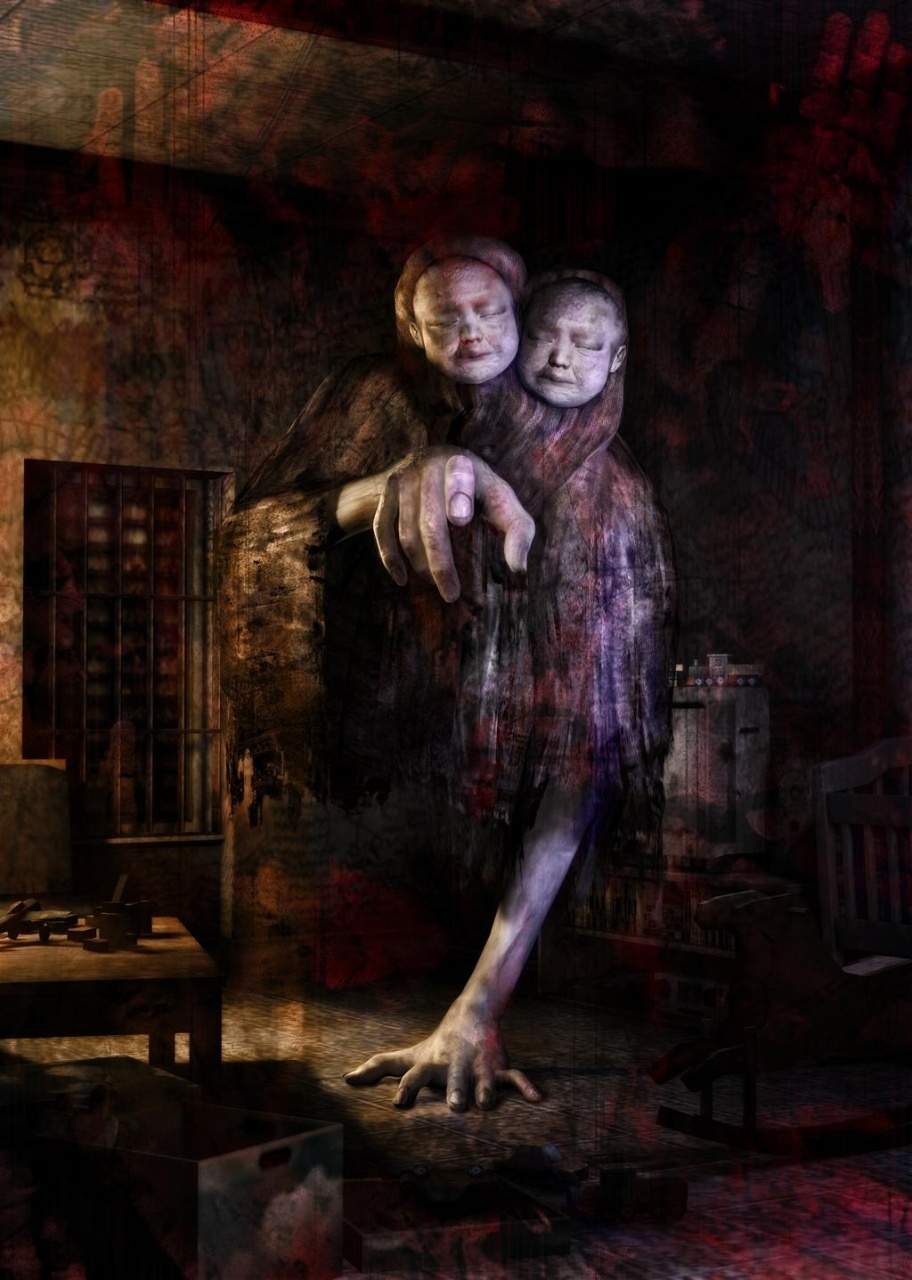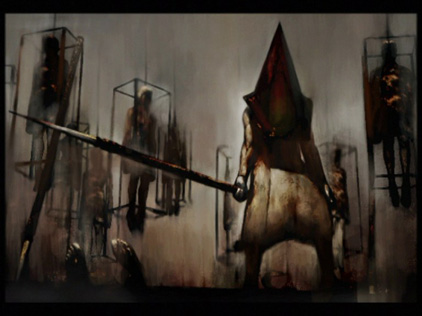 Weighty-sounding, isn't it? "Creating a universe". Can you imagine what all goes into literally creating an entire universe?
Weighty-sounding, isn't it? "Creating a universe". Can you imagine what all goes into literally creating an entire universe?Authors, developers, directors, and artists alike do this kind of thing all the time; they birth an entire universe with their minds, and then create a series of rules and guidelines by which their universe abides. This can include everything from creating the history behind an object, or the laws and guidelines that govern a fictitious people. Any way you slice it, that kind of rampant creativity requires an awful lot of work.
What got me thinking about this idea of universe-creation was after finally being able to play and beat Mass Effect 2, for the PlayStation 3 (Lucky 360 guys got it a year earlier!). What fascinates me is the amount of unnecessary detail the men and women at Bioware went into while creating the story universe for the Mass Effect games. In an interview with IGN, Ray Muzyka, CEO of Bioware, mentioned that a team of designers and artists spent 6 months to a year doing nothing but fleshing out the "IP (Intellectual Property) Bible" for Mass Effect. According to him, the IP Bible is "consulted for all Mass Effect games", and he compared the whole thing to an "iceberg that's down there, giving it weight and gravity, credibility and depth". The result of this explosion of creativity is a video game in which every character has palpable motivations and history; every race of aliens has a culture, a homeworld complete with politics and law, religion and family customs. The fruit of all of this creative labor has even been given a special place within the Mass Effect games, in the in-game Codex.
 The Codex in a Mass Effect game is a teriffic read in itself, a kind of encyclopedia of various peoples, races, worlds, technologies, and other kinds of terms and historical bits and bobs that the game itself makes liberal use of; I couldn't get enough of it, and wish there were more. Another of the truly cool parts of the game's Codex is that it draws upon actual science as a means to explain its own fiction; things that I recall reading about or hearing about in the various science and space-related documentaries and blogs I take in here and there.
The Codex in a Mass Effect game is a teriffic read in itself, a kind of encyclopedia of various peoples, races, worlds, technologies, and other kinds of terms and historical bits and bobs that the game itself makes liberal use of; I couldn't get enough of it, and wish there were more. Another of the truly cool parts of the game's Codex is that it draws upon actual science as a means to explain its own fiction; things that I recall reading about or hearing about in the various science and space-related documentaries and blogs I take in here and there.This may sound like a side topic, but it still proves interesting just how deeply the developers consider a game's universe when designing it. Take a look at this article, taken from the Mass Effect wikia page; it's an article about FTL (Faster Than Light) travel, within the Mass Effect universe. This article has text that was lifted directly from Mass Effect's Codex, and so you can see how much thought was put into just the explanation of faster than light travel. Now, this is something that according to Einstein's law of relativity, should be impossible because of the amount of energy it takes to move something so fast; when you're talking about going the speed of light, you're talking about requiring an infinite amount of energy to move even something as small as a single person, let alone a complete starship. Mass Effect's creative writers seem to have been especially proud of their workaround to this law of physics, considering that the very effect that allows anything to go faster than light in Mass Effect is called the "mass effect field", or rather a fictional phenomena in which an object's mass is reduced so that it can travel faster than the speed of light. That way, all of the game's alien species, spread out over the entire Milky Way galaxy, can communicate with one another.
 It reminds me of the amount of work put into the collective "bibles" put together for other worlds created within literature, such as the Star Trek (Seen to the side here), Star Wars, and Lord of the Rings universes; the sheer amount of canonical information these things are created from is staggering. The thing that's cool, however, is that until more recently, movies, TV shows, and books were the only places you could really find these gigantic databases of information coming from.
It reminds me of the amount of work put into the collective "bibles" put together for other worlds created within literature, such as the Star Trek (Seen to the side here), Star Wars, and Lord of the Rings universes; the sheer amount of canonical information these things are created from is staggering. The thing that's cool, however, is that until more recently, movies, TV shows, and books were the only places you could really find these gigantic databases of information coming from.Nowadays, almost any kind of gaming series you can think of would require some kind of "bible", so as to keep continuity through the different iterations of a franchise. Dead Space, for instance, has to keep track of 500 years' worth of human history, so that all of the facts spread amongst a novel, two major console releases, an iPhone game, a Wii on-rails shooter game, and two animated movies is consistent with each other. Call it a consequence of transmedia, in which a single franchise that may have started as a movie, or a game, or a book, can spread and become popular in other mediums.
 Now, with any kind of transmedia venture, things can go wrong...and for some reason, that seems to happen most often with video games in their transition to movie theaters. Probably the biggest example I can think of in which a video game has been rendered nearly unrecognizable is the Resident Evil films. Don't get me wrong; I actually find something to enjoy in them. They're campy and fun, and they're just generally enjoyable popcorn flicks.
Now, with any kind of transmedia venture, things can go wrong...and for some reason, that seems to happen most often with video games in their transition to movie theaters. Probably the biggest example I can think of in which a video game has been rendered nearly unrecognizable is the Resident Evil films. Don't get me wrong; I actually find something to enjoy in them. They're campy and fun, and they're just generally enjoyable popcorn flicks.Problem is, the video games have an entirely different story than the films do, to the point where I can't understand how both of these things can coexist like they do.
 Resident Evil fans know what I'm talking about; the films have taken liberties with the story content that is baffling, to say the least. The games themselves are about the battles of a small group of people (Chris Redfield, Jill Valentine, Leon Kennedy, and a few others) as they try and prevent an evil corporation, Umbrella, from controlling the world by creating all kinds of nasty viruses that turn people into zombies and other various abominations of science. That's the games in a nutshell. The movies? They're about a woman named Alice, who is apparently doing the exact same thing, but all of the characters who were in the games were reduced into small, bit roles; they aren't the main characters, and they haven't even all been in the films yet. On top of that, in the films' continuity, the Earth is now a desert wasteland that's been completely destroyed by Umbrella. In the games' continuity, Umbrella as a corporation doesn't even EXIST anymore; it was dissolved by the US Government after their illegal experimenting into the human genome was made public.
Resident Evil fans know what I'm talking about; the films have taken liberties with the story content that is baffling, to say the least. The games themselves are about the battles of a small group of people (Chris Redfield, Jill Valentine, Leon Kennedy, and a few others) as they try and prevent an evil corporation, Umbrella, from controlling the world by creating all kinds of nasty viruses that turn people into zombies and other various abominations of science. That's the games in a nutshell. The movies? They're about a woman named Alice, who is apparently doing the exact same thing, but all of the characters who were in the games were reduced into small, bit roles; they aren't the main characters, and they haven't even all been in the films yet. On top of that, in the films' continuity, the Earth is now a desert wasteland that's been completely destroyed by Umbrella. In the games' continuity, Umbrella as a corporation doesn't even EXIST anymore; it was dissolved by the US Government after their illegal experimenting into the human genome was made public. How could two properties, based on the same franchise, wind up so differently? I'm sure there's a host of different factors involving rights and lack of involvement and communication between an American director and a Japanese developer, but what it all boils down to is a lack of control over the IP's Bible. With Resident Evil, the IP Bible has to be a complete mess, because the games themselves have a convoluted, borderline nonsensical continuity that makes little to no sense most of the time. Honestly, I couldn't even tell you what all has happened in all the games because it's become such a giant mess.
How could two properties, based on the same franchise, wind up so differently? I'm sure there's a host of different factors involving rights and lack of involvement and communication between an American director and a Japanese developer, but what it all boils down to is a lack of control over the IP's Bible. With Resident Evil, the IP Bible has to be a complete mess, because the games themselves have a convoluted, borderline nonsensical continuity that makes little to no sense most of the time. Honestly, I couldn't even tell you what all has happened in all the games because it's become such a giant mess.But that doesn't make the games any less enjoyable! I love Resident Evil, for and despite all of its campiness.
Now, don't think that just because a video game doesn't have a fully fleshed-out tome of information dedicated to its world and its universe that I don't like it; there's plenty of games that have nothing of the sort whatsoever, and yet they're absolutely wonderful. I really doubt the Mario series has a continuity to it, and yet Mario games to this very day are some of the finest things you can find out there.
Ever try looking into the continuity in the Legend of Zelda series? It's amazingly disjointed and nonsensical, and yet I wouldn't change it for the world; I love that series just the way it is, and just how I hope it always will be.
 The great thing though, is just how wonderfully diverse the world of gaming has become, that such things can coexist in the same space. Sharing shelf space with my Assassin's Creed series (A transmedia franchise with an absolutely wonderful backstory) is 3D Dot Game Heroes, a lovingly-made clone of The Legend of Zelda, with the simplest of stories; rescue the princess, save the kingdom. I don't need some story bible for something like that; it's beautiful and perfect just the way it is.
The great thing though, is just how wonderfully diverse the world of gaming has become, that such things can coexist in the same space. Sharing shelf space with my Assassin's Creed series (A transmedia franchise with an absolutely wonderful backstory) is 3D Dot Game Heroes, a lovingly-made clone of The Legend of Zelda, with the simplest of stories; rescue the princess, save the kingdom. I don't need some story bible for something like that; it's beautiful and perfect just the way it is.So let me just extend my personal "Thank you!!" to these developers who slave away, making these games as wonderful as they have been the past few years. Sure, not all of them have had the loving attention to detail that the Mass Effect franchise has, but they're all wonderful just the same. Thanks guys, you do some damn fine work.
Here's a list of some other franchises you might want to look into if you haven't yet, ones with storied histories that probably kept their developers up for months on end. (It's by no means a complete list of course!)
- Dragon Age
- Grand Theft Auto
- The Elder Scrolls
- Resistance
- Halo
- Uncharted
- Silent Hill
- Final Fantasy
- Metal Gear Solid
- God of War
- Xenogears (And Xenosaga)
- Metroid


































